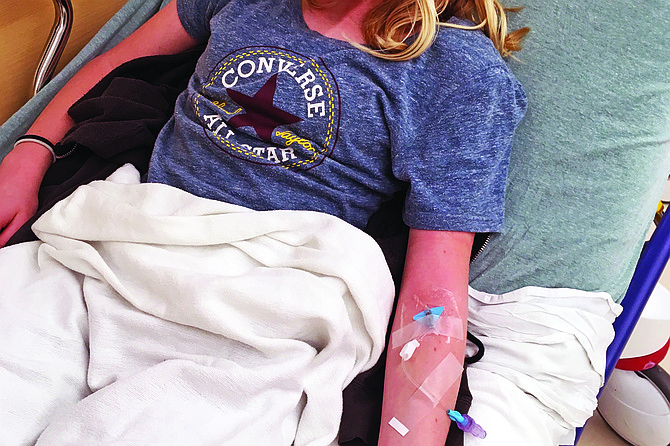 Facebook
Facebook
 X
X
 Instagram
Instagram
 TikTok
TikTok
 Youtube
Youtube

The emergency room teaches you some things and reminds you of others. It teaches you that what looks like an emergency to you — my daughter is weeping from the pain and it’s not letting up! — does not look like an emergency to the rest of the world. There is no Code Pink announcement over the PA to command that attention be given to a precious little girl in distress.
It reminds you of shallow things — how suffering twists expressions and robs faces of their beauty — and deeper things — that we fortunates think of ease as normal and dis-ease as abnormal, when the opposite is almost certainly true. (Most of the casualties during WWI were due to famine and disease, etc.)
It teaches that you can say “No, I’m not ready,” and “No, I don’t want this,” and “No, I can’t do this” all you like, but it won’t make a bit of difference. In this case, that meant the doctor was going to put in an IV and that was that, never mind the panic in my child’s eyes as she contemplated the needle. I tried to murmur all sorts of comfort, but the only comfort she wanted was the good news that the doctor had relented, and we both knew that wasn’t coming. In another case, that means I’m going to die one day.
It reminds you about helplessness, and about the accidents of circumstance, and that the best way to forget your own sorrow is to think of someone else’s. When my daughter saw a mom cradling her newborn and weeping, she cried for the mother’s loss. When it turned out the baby was alive, she rejoiced at the mother’s relief.
It teaches that it’s probably not as serious as you think, until it is. (It wasn’t appendicitis.)


The emergency room teaches you some things and reminds you of others. It teaches you that what looks like an emergency to you — my daughter is weeping from the pain and it’s not letting up! — does not look like an emergency to the rest of the world. There is no Code Pink announcement over the PA to command that attention be given to a precious little girl in distress.
It reminds you of shallow things — how suffering twists expressions and robs faces of their beauty — and deeper things — that we fortunates think of ease as normal and dis-ease as abnormal, when the opposite is almost certainly true. (Most of the casualties during WWI were due to famine and disease, etc.)
It teaches that you can say “No, I’m not ready,” and “No, I don’t want this,” and “No, I can’t do this” all you like, but it won’t make a bit of difference. In this case, that meant the doctor was going to put in an IV and that was that, never mind the panic in my child’s eyes as she contemplated the needle. I tried to murmur all sorts of comfort, but the only comfort she wanted was the good news that the doctor had relented, and we both knew that wasn’t coming. In another case, that means I’m going to die one day.
It reminds you about helplessness, and about the accidents of circumstance, and that the best way to forget your own sorrow is to think of someone else’s. When my daughter saw a mom cradling her newborn and weeping, she cried for the mother’s loss. When it turned out the baby was alive, she rejoiced at the mother’s relief.
It teaches that it’s probably not as serious as you think, until it is. (It wasn’t appendicitis.)
Comments